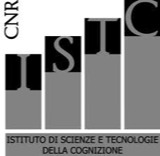News: SHAPES 2.0, at UniLog 2013
Shapes dates: April 3-4, 2013
Previous event: SHAPES 1.0
Shape, Form, and Structure
Shape, Form, and Structure are some of the most elusive notions within diverse disciplines ranging from humanities (literature, arts) to sciences (chemistry, biology, physics etc.) and within these from the formal (like mathematics) to the empirical disciplines (such as engineering and cognitive science). Even within domains such as computer science and artificial intelligence, these notions are replete with commonsense meanings (think of everyday perception and communication), and formalisations of the semantics and reasoning about shape, form, and structure are often adhoc. Whereas several approaches have been proposed within the aforementioned disciplines to study the notions of shape, form and structure from different viewpoints, a comprehensive formal treatment of these notions is currently lacking and no real interdisciplinary perspective has been put forward.
This workshop will provide an interdisciplinary platform for the discussion of all topics connected to shape (broadly understood): perspectives from psycho-linguistics, ontology, computer science, mathematics, aesthetics, cognitive science and beyond are welcome to contribute and participate in the workshop. We seek to facilitate a discussion between researchers from all disciplines interested in representing shape and reasoning about it. This includes formal, cognitive, linguistic, engineering and/or philosophical aspects of space, as well as their application in the sciences and in the arts.
We also welcome contributions on the relationship among representations of shape at different levels of detail (e.g. 2D, 3D) and in different logics, and with respect to different qualitative and quantitative dimensions, such as topology, distance, symmetry, orientation, etc.
This workshop will provide an interdisciplinary platform for the discussion of all topics connected to shape (broadly understood): perspectives from psycho-linguistics, ontology, computer science, mathematics, aesthetics, cognitive science and beyond are welcome to contribute and participate in the workshop. We seek to facilitate a discussion between researchers from all disciplines interested in representing shape and reasoning about it. This includes formal, cognitive, linguistic, engineering and/or philosophical aspects of space, as well as their application in the sciences and in the arts.
We also welcome contributions on the relationship among representations of shape at different levels of detail (e.g. 2D, 3D) and in different logics, and with respect to different qualitative and quantitative dimensions, such as topology, distance, symmetry, orientation, etc.
Form and Function in Natural and Artificial Systems
Within the philosophy and practice of design, the ontological notions of shape, form and structure have a further role of constraining function, malfunction, and behaviour of things. In this perspective, the decision-making process in design is a trade-off between physical, logical and cognitive laws and constraints that intertwine shapes and functionalities. Here, the spatio-linguistic, conceptual, formal, and computational modeling of shape serves as a crucial step toward the realization of functional affordances. This line of thought extends to several other disciplines concerned not only with the design of technical systems, but also with the understanding of biological as well as socio-technical systems. For instance, in biochemistry the shape of molecular entities (proteins, small molecules) has a direct effect on their interactions which give rise to the capacities they can manifest and, in turn, to the processes of life and death. Representing and reasoning with the shapes and realizable functionalities of these entities is essential to understand basic biological processes. Of special importance, in this as well as other contexts, is the understanding of shape complementarity, that is, categorising the shapes of holes as well as the shapes of the entities that can fit into those holes, which can either facilitate or block the functionality of the overall system.



